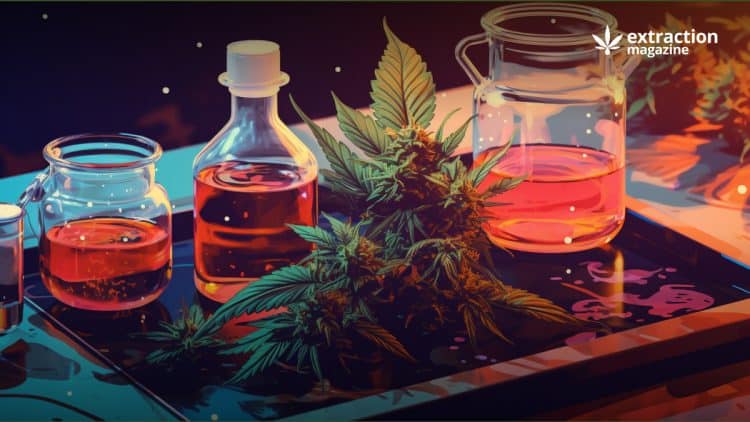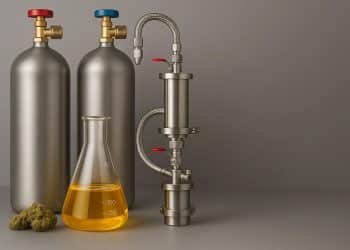Extracting THC can be a highly involved process requiring sophisticated equipment and skilled technicians. But it can also be done by DIYers, especially when using more simplified extraction methods using alcohol.
But while alcohol extraction may be relatively simple, it’s not without its complications and potential dangers. Read on to find out what’s involved in extracting THC with alcohol, how to do it safely, and why it may be best left to the commercial extractors to do.
What is Alcohol Extraction?
Alcohol may used as a solvent in THC extraction. All commercial extractions are required to go through laboratory testing to make sure that any levels of residual solvent that are considered unsafe are not present.
Ethanol is among the more commonly-used alcohols in alcohol extraction and typically evaporates easily, which is why it is not as risky to human health compared to other solvents, like butane.
Simple extractions using high-proof alcohol can be done in at-home settings. However, commercial extractions use much more innovative methods and technological equipment to extract and purify cannabis resin.
How to Extract THC With Alcohol At Home
Making THC concentrate with alcohol at home is relatively straightforward. It doesn’t require complex equipment and it’s pretty inexpensive. This is why it’s often a chosen method of extraction, especially for do-it-yourselfers.
Here are the basic steps of extracting THC with alcohol, safely:
Soak the Cannabis
The cannabis plant material should be placed in some sort of vessel, either loose or in a bag. Then, the plant material is completely covered with alcohol.
Let the material soak for a while. The amount of time left to soak will depend on the temperature of the ethanol and the desired product profile.
The THC to Become More Soluble
As the cannabis material is soaking, the alcohol will make the THC more soluble. Other cannabinoids, terpenes, pigments, and plant lipids may also solubilize during the soaking.
The Plant Material and Alcohol Will Separate
Once the cannabis has soaked long enough, the plant material and alcohol solution will separate from each other. If the cannabis was in a bag, simply remove the bag from the vessel. If it was left loose, an extra filtration step may be required.
Remove the Alcohol From the Extract
The alcohol will need to be removed from the extract, which can be done with vacuum distillation in an evaporator. A vacuum oven may also be required to eliminate any remaining alcohol, especially if there’s still a high level remaining.
Remove Lipids if Required
Depending on the temperature of the alcohol, a winterization step may be necessary to get rid of plant lipids. But if using cold alcohol, the solution may be fine the way it is without any extra winterizing steps.
If extracted at room temperature, you may be able to achieve a healthy plant profile without any heating or cooling equipment. In fact, room temperature extraction is typically less expensive and the result is typically a fuller product profile.
Potential Drawbacks Involved With At-Home Alcohol Extraction
There are some potential hazards involved with the alcohol extraction process that at-home extractors should be aware of.
The biggest risk comes with the fact that alcohol is extremely flammable, especially high-proof alcohol. As such, it should never be evaporated inside or close to an open flame. It should also never be boiled.
Improper installation and use of equipment can easily lead to a fire or explosion. Therefore, it’s crucial to ensure proper ventilation.
Further, cannabis dust accumulations can arise, particularly in small, confined spaces without adequate ventilation. Over time, this may cause respiratory issues.
If you decide to extract THC using alcohol extraction, make sure you do so in a well-ventilated space using the proper equipment and taking the necessary precautions.












